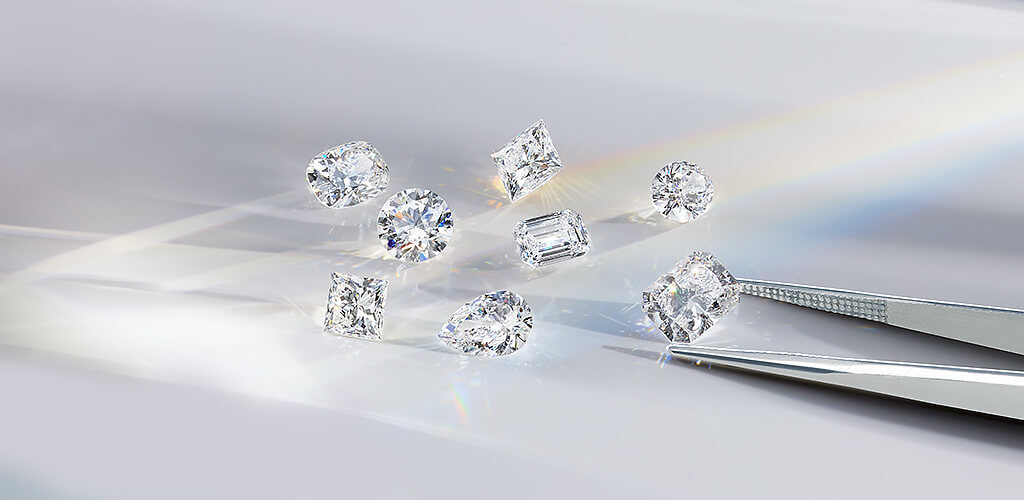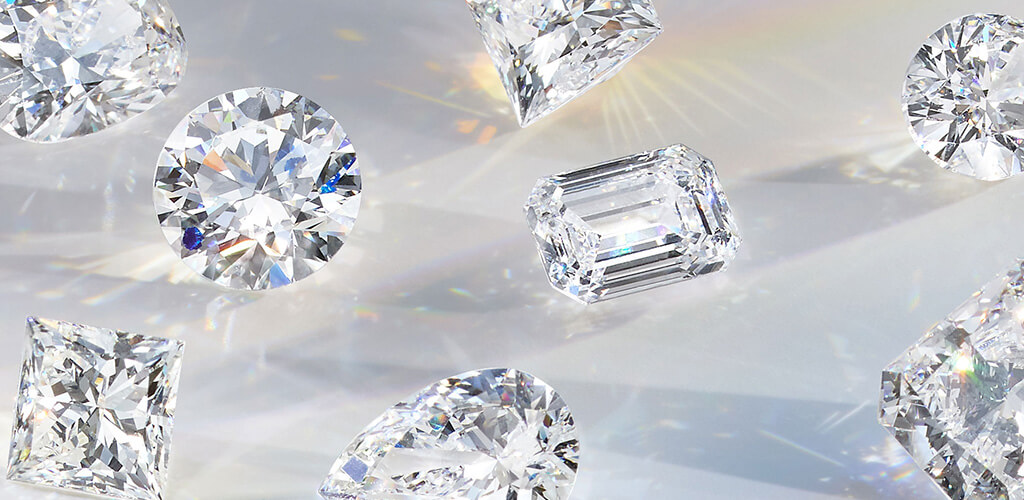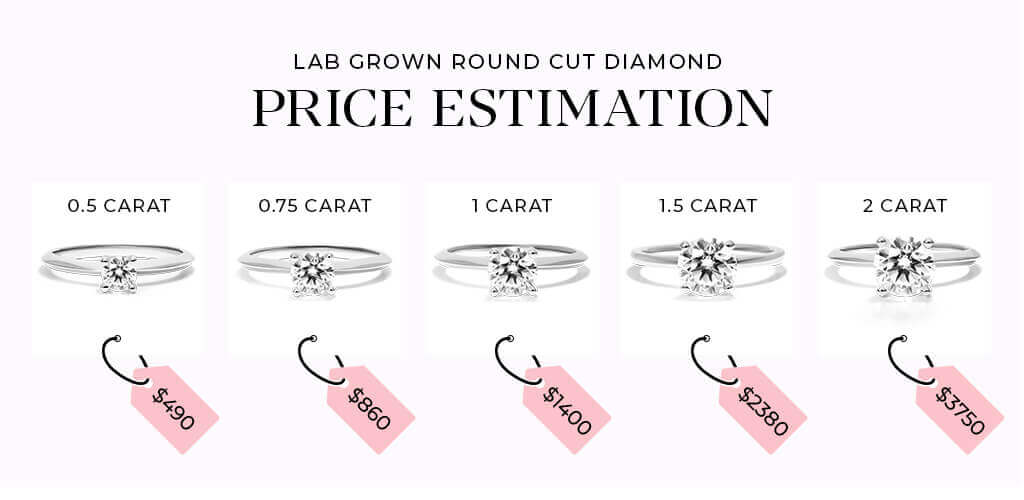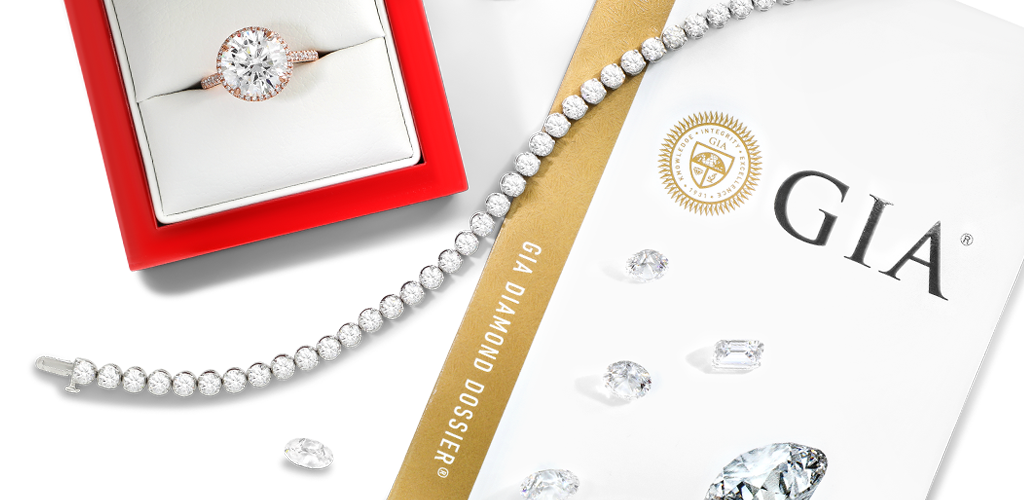
Lab grown diamond or earth created diamond? We’ve got all the info you need to live your best sparkling life with the perfect diamond for you!
Lab grown diamonds have become increasingly popular and are pretty much the new kids on the jewelry block. Like many new unknowns, people are a little skeptical at first when they hear about diamonds that are made in a lab, but rest assured, they make for a perfect alternative to natural diamonds. Let’s start with some basic facts so you can decide with 100% confidence which sort of sparkle sets a twinkle in your eye.
Diamonds are carbon atoms. When they’re arranged in a very particular structure, you get the tough and beautiful stone we know and love. Producing this special carbon arrangement in nature demands conditions that are intense. We’re talking high heat and super-high pressure. Needless to say, very few places in the world are capable of producing natural diamonds.
A natural diamond is a gemstone found deep in the earth’s crust, formed over millions of years, and mined all over the world. Also known as the April birthstone, diamonds are the rarest of all gemstones and the most sought-after center stone for engagement rings.

A lab grown diamond, also known as a man-made diamond is a diamond that is formed in a lab instead of the earth’s crust (don’t you just love science?) Lab diamonds are chemically and optically identical to natural diamonds, the only difference is in the price tag! You’ll find that lab diamonds are three times less expensive than natural diamonds.
Remember, lab grown diamonds ARE real diamonds!
Lab diamonds come in all shapes and sizes, just like natural diamonds. From the classic round brilliant to the more trending shapes like marquise diamonds, you’ll find your ideal cut in a lab created option.

Picking a diamond isn’t easy, there’s your budget to consider, your partner’s preference for cut, clarity, carat, and color, and its rarity factor.
One of the biggest upsides to lab grown diamonds is that they’re generally about 30% more affordable than natural diamonds.
Why?
The diamond-growing process is less resource-intensive than the diamond-mining process. It simply costs less to grow a diamond in a lab than it does to mine a diamond from the earth, and those savings are passed along to diamond shoppers. That means that for the same cost, you can purchase a diamond created in a lab that’s 30% larger than one created in the earth, but just as dazzling.

Natural diamonds are the classic choice. Lab grown diamonds are the fresh choice.
There is no doubt that natural diamonds contain millennia of history, tradition, and romance. They are one of nature’s most incredible products. Drawn from deep within the earth, these sparkling treasures have been proudly flaunted by generations, paving the way for you to carry on the tradition.
Diamonds created in a lab generally have lower resale value compared to diamonds mined from the earth. Natural diamonds can retain or even appreciate in value over time, while lab diamonds may not hold their value as well in the secondary market due to their lower production cost.
Both natural and lab grown diamonds are available in nearly every shape and color – even fancy colors!
Colorful diamonds, like canary yellow ones, are quite rare. Their shocking hues are caused by trace amounts of non-carbon elements, like nitrogen. By adding these elements to a growing diamond in its pressure chamber, lab grown diamonds take on the same fancy colors as natural diamonds.
Good news: any diamond can be cut into any shape. When it comes to diamond cuts, you truly are spoiled for choice!
Like all natural diamonds, lab grown diamonds also come with their very own birth certificate (GIA Certification).
Since lab grown diamonds are optically and chemically the same as mined diamonds, they come with their own certification. Today, most diamonds created in a lab are certified by IGI, International Gemological Institute.
Additionally, these diamonds are being accepted and certified by the GIA, the Gemological Institute of America, which has developed sophisticated devices that are used to screen and identify the difference between natural diamonds and lab grown ones.

The short answer is, why not? Here are 5 reasons to choose a lab grown diamond engagement ring:
You’re able to maximize your budget and walk away with a bigger center stone for your engagement ring if you choose a lab diamond. Furthermore, it might not even be about the size of the ring, but more about being able to get the diamond of your dreams for a third of the price.
Lab grown diamonds are an ethical choice because they are guaranteed to come conflict-free since they’re not mined.
Most online jewelry retailers with customization options, like our very own ring studio, allow you to choose your preferred center stone. That means you’re able to inspect your diamond options (often in real-time), and browse at your own pace.
This can’t be emphasized enough, both lab diamonds and mined diamonds have the same chemical, optical, and physical properties. A lab created diamond is not a diamond alternative like moissanite, it’s the real deal.
Lab grown diamonds are unique in their own right. Not only can they be cut and shaped to your heart’s desire, but they can be cut to absolute perfection. Our True Heart™ diamonds are a premier collection of perfectly cut diamonds, known for their flawless internal symmetry and proportions.
Choosing the stone that suits your lifestyle is an important part of designing meaningful jewelry that will last you throughout your life. And if you choose to buy either lab grown diamonds or natural diamonds, you can choose from 500,000 beautiful options at James Allen.
Yes, lab diamonds have the same level of durability as natural diamonds. Both types of diamonds rank 10 on the Mohs scale of hardness, making them highly resistant to scratching and suitable for everyday wear.
No, it’s impossible to differentiate between the two types of diamonds with the naked eye. They share the same physical and optical characteristics, making visual identification nearly impossible without specialized equipment.
Yes, these diamonds come in a wide range of sizes and shapes, just like natural diamonds. Whether you’re looking for a classic round brilliant cut or a unique fancy shape, you can find lab diamonds to suit your preferences.
Lab diamonds, like natural diamonds, do not require special care. You can clean them using mild, soapy water and a soft brush or cloth. Regular maintenance, such as checking the setting, is recommended to ensure the diamond stays secure in its setting.